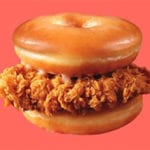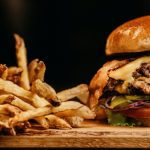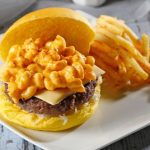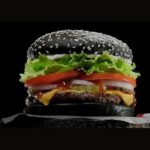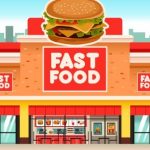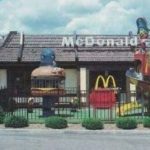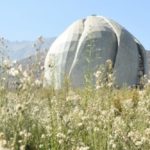 Technology
Technology  Technology
Technology  Humans
Humans 10 Everyday Human Behaviors That Are Actually Survival Instincts
 Animals
Animals 10 Animals That Humiliated and Harmed Historical Leaders
 History
History 10 Most Influential Protests in Modern History
 Creepy
Creepy 10 More Representations of Death from Myth, Legend, and Folktale
 Technology
Technology 10 Scientific Breakthroughs of 2025 That’ll Change Everything
 Our World
Our World 10 Ways Icelandic Culture Makes Other Countries Look Boring
 Misconceptions
Misconceptions 10 Common Misconceptions About the Victorian Era
 Mysteries
Mysteries 10 Strange Unexplained Mysteries of 2025
 Miscellaneous
Miscellaneous 10 of History’s Most Bell-Ringing Finishing Moves
 Technology
Technology Top 10 Everyday Tech Buzzwords That Hide a Darker Past
 Humans
Humans 10 Everyday Human Behaviors That Are Actually Survival Instincts
 Animals
Animals 10 Animals That Humiliated and Harmed Historical Leaders
Who's Behind Listverse?

Jamie Frater
Head Editor
Jamie founded Listverse due to an insatiable desire to share fascinating, obscure, and bizarre facts. He has been a guest speaker on numerous national radio and television stations and is a five time published author.
More About Us History
History 10 Most Influential Protests in Modern History
 Creepy
Creepy 10 More Representations of Death from Myth, Legend, and Folktale
 Technology
Technology 10 Scientific Breakthroughs of 2025 That’ll Change Everything
 Our World
Our World 10 Ways Icelandic Culture Makes Other Countries Look Boring
 Misconceptions
Misconceptions 10 Common Misconceptions About the Victorian Era
 Mysteries
Mysteries 10 Strange Unexplained Mysteries of 2025
 Miscellaneous
Miscellaneous 10 of History’s Most Bell-Ringing Finishing Moves
10 Unique Fast Food Chain Restaurant Buildings
Fast food chain restaurants tend to be fairly uniform. From the food on the menu to the interior furnishings, everything is designed to be near-identical in branches across the world. This creates a cohesive brand identity and provides patrons with a sense of familiarity, but there are some notable exceptions. For instance, some chains carry country-specific menu items, ranging from kimchi quesadillas in South Korean Taco Bells to Nutella burgers in McDonald’s locations across Italy.
As well as unusual menu items, there are also some unique fast food buildings dotted around the globe. Here are 10 of the most interesting buildings that house chain restaurants, featuring popular eateries such as McDonald’s, Burger King, and Starbucks.
Related: 10 Weirdest Menu Items from American Fast Food Chains in Other Countries
10 Train Station KFC, Azerbaijan
The largest KFC restaurant in the world happens to be located in a massive converted train station in Baku, Azerbaijan’s capital city. Sabunchu train station was originally built in 1926 but had fallen into disrepair, allowing KFC to swoop in and do the building up for a whopping three million euros (a little over $3.2 million). The grand building stretches over 17,222 square feet (1,600 square meters) and features two impressive domed towers.
In 2012, KFC celebrated the opening of the huge restaurant with a light show. The company’s logo image of Colonel Sanders was projected onto the building, along with images of buckets of chicken and sandwiches. All this was set to a distinctly odd musical arrangement, featuring a transition from The Prodigy’s rave-worthy “Omen” to Frank Sinatra’s crooning ballad “My Way” and back again.[1]
9 Taco Bell Defy, Minnesota, U.S.A.
Drive-thru is incredibly popular at fast food restaurants, but the usual system—every car going through one lane to order from the window—can often cause long lines. Taco Bell has attempted to revolutionize this process with Taco Bell Defy in Minnesota, which opened in 2022. The two-story building features four drive-thru lanes on the bottom, while the kitchen is elevated above. Food is delivered to customers via a vertical lift.
Three of the lanes are for people who have ordered via the app and are picking their food up. Taco Bell President Mike Grams says that the aim of this location is to create “a 2-minute or less drive-thru experience for customers.” The fourth lane is a traditional kiosk where customers can speak to a member of staff to place their order. There is also a small inside space on the ground floor with a touch-screen kiosk for walk-in customers.[2]
8 Flying Saucer McDonald’s, New Mexico, U.S.A.
Thanks to the 1947 Roswell Incident (which the U.S. government reports was just a military balloon), Roswell, New Mexico, has become known for its connection to potential flying saucers and alien life. As a result, UFO-related sights and attractions can be seen and visited throughout the city, such as the International UFO Museum and Research Center. McDonald’s even got into the spirit of things, giving one of their restaurants a spacey theme.
The outside of the building is shaped like a flying saucer and features decorative strips of red lights. There are statues of grey aliens dotted around, as well as figures of McDonald’s characters in spacesuits. Sadly, the menu isn’t space themed, though.
During the 1990s, another UFO-shaped McDonald’s could be found in Alconbury, England. It shut down in 2000 because of rising maintenance costs, which were partly due to the outer shell of the restaurant being made out of plastic.[3]
7 Artistic Glass McDonald’s, Georgia
One of the most popular tourist destinations in Georgia (the country, not the American state) is Batumi, which is known as “The Las Vegas of the Black Sea.” Located right on the coast, the city features a mixture of grand historical architecture and contemporary modern skyscrapers. A regular Golden Arches wouldn’t fit into this landscape, so architect Giorgi Khmaladze designed a sleek McDonald’s building that looks like a swanky fine dining restaurant.
The angular glass dome looks impressive from the outside, and the inside is just as striking. The upstairs dining area is framed by a beautiful sloping green garden, which erupts into blooming flowers in the springtime. This area is actually a canopy, which conceals a gas station below. Not many McDonald’s buildings win design awards, but in 2014, this glass creation won ArchDaily’s award for best commercial building.[4]
6 Truett’s Luau Chick-fil-A, Georgia, U.S.A.
There are a few unique Chick-fil-A locations in Georgia (this time, it’s the state, not the country) that are S. Truett Cathy Brand restaurants. Named for Chick-fil-A’s founder, these restaurants are designed to celebrate the history of the chain, but one stands out among the rest: Truett’s Luau. This Hawaii-themed Chick-fil-A opened in 2013 because Truett Cathy wanted to “bring Hawaii to Fayetteville, Georgia,” after loving his visit to the island.
The restaurant is decked out in Hawaiian-inspired decor, from a wall of ukuleles to tropical plants. There’s even a waterfall outside. The menu also heavily features Hawaiian-inspired food, along with Chick-fil-A classics. Customers can tuck into mahi mahi, fish tacos, and a kalua BBQ pork sandwich. All of this can be washed down with specialty drinks, such as the Frosted Pineapple, which is basically a pineapple milkshake.[5]
5 Shipping Container Starbucks, Taiwan
Starbucks has dabbled in turning metal shipping containers into tiny coffee shops in the past, but they pale in comparison to the large boxy creation that can be found in Taiwan. Located at Hualien Bay Mall, the Starbucks location is made out of 29 shipping containers that are artistically stacked.
The whole space measures 3,444 square feet (320 square meters) and stands two stories tall. Large windows cap some of the white containers, and skylights let in even more natural light. The creation isn’t just about artistic flair (although Japanese architect Kengo Kuma’s design is certainly eye-catching); it’s also part of Starbucks’s plan to build stores that are more sustainable.[6]
4 Sauna Burger King, Finland
The meat sweats are usually something people want to avoid, but in the Burger King located on Helsinki’s main street, sweating and meat are brought together in the form of a sauna. The in-restaurant sauna is big enough to accommodate 15 diners. There’s also a shower, a locker room, and a media lounge. In 2016, the price of hiring the sauna for three hours was 250 euros (at the time, $283), which excludes the cost of food.
Although the idea of sweating over a Whopper may not appeal to everyone, saunas are a way of life in Finland, with one sauna for every three people. Burger King’s contribution to the number of saunas in the country won Euromonitor’s award for New Concepts in Food Service, which called it “a powerful example of localization.” The strange sauna has even been graced by Paul Rudd and Richard Ayoade, who visited for a 2016 episode of the TV show Travel Man.[7]
3 Traditional Machiya Starbucks, Japan
Starbucks is no stranger to matching the design of its stores to the surrounding architecture, but a particularly unique example of this can be found in Kyoto, Japan. Higashiyama is one of Kyoto’s best-preserved historical areas, with its traditional wooden townhouses called machiya. The Starbucks store in this area is housed inside a 100-year-old renovated machiya and blends in seamlessly with the surrounding buildings.
A Japanese garden can be found on the ground floor, while upstairs, there are Tatami mats and silk cushions. The only signage to indicate that it’s even a Starbucks is the siren logo (commonly mistaken for a mermaid) on the traditional teal door curtains called noren. Takafumi Minaguchi, the CEO of Starbucks Coffee Japan, explains that “as this store is in an area of great cultural significance, we feel a responsibility to be the stewards of the building’s traditional architecture and ensure that it remains an integral part of its historic neighborhood for many years to come.”[8]
9 Airplane McDonald’s, New Zealand
The McDonald’s in Taupo on New Zealand’s North Island is home to a decommissioned Douglas DC-3 airplane, where customers can tuck into their Big Macs and McNuggets. When the plane was originally grounded, it was parked outside of Taupo’s Aeroplane Car Company and used as a prop for advertisement. In 1990, McDonald’s purchased the building, and the sale came with the plane, so they turned it into a dining space. There are 10 tables inside, which can seat 20 diners, and the untouched cockpit can be viewed through a glass door. Owner Eileen Byrne says that “Our locals are very proud of it. It has become a landmark here in New Zealand.”
New Zealand’s impressive airplane restaurant isn’t the only McDonald’s located in a converted mode of transport. In the McDonald’s in Barstow, California, meals can be eaten in old train cars.[9]
1 One World Trade Center Subway, New York, U.S.A.
The One World Trade Center is the tallest building in the United States, and the construction of the 1,776-foot (541-meter) high skyscraper posed a problem for the hungry ironworkers: where to get lunch. Ascending and descending the in-progress building would have taken up a lot of valuable time at lunch, so a Subway shop was installed in a cargo container that could be raised up the building as the workers rose ever higher.
The small Subway shop cost $500,000 to build and was raised via a hydraulic lift, taking about two hours to ascend per floor. The food and beverages were hoisted up to the ever-rising shop via cranes. Food waste was composted, and leftover drinks were boiled until they evaporated. Two hundred meals needed to be sold each day for the restaurant to break even, but in the end, only around 90 workers tucked into the sandwiches at lunch. DCM, the steel company that put the building up, agreed to compensate for any losses, with the franchise running up a bill of $180,000. But DCM’s Bill Grutta doesn’t regret it because “it means we saved 90 rides on the hoist a day.”
The exclusive Subway in the sky was forced to close after about two years of operation. At the 90th floor, near the top, the building began to narrow, and there wasn’t enough room for the sandwich shop anymore. Still, it followed the workers up the majority of the building, which rises to 104 floors.[10]
